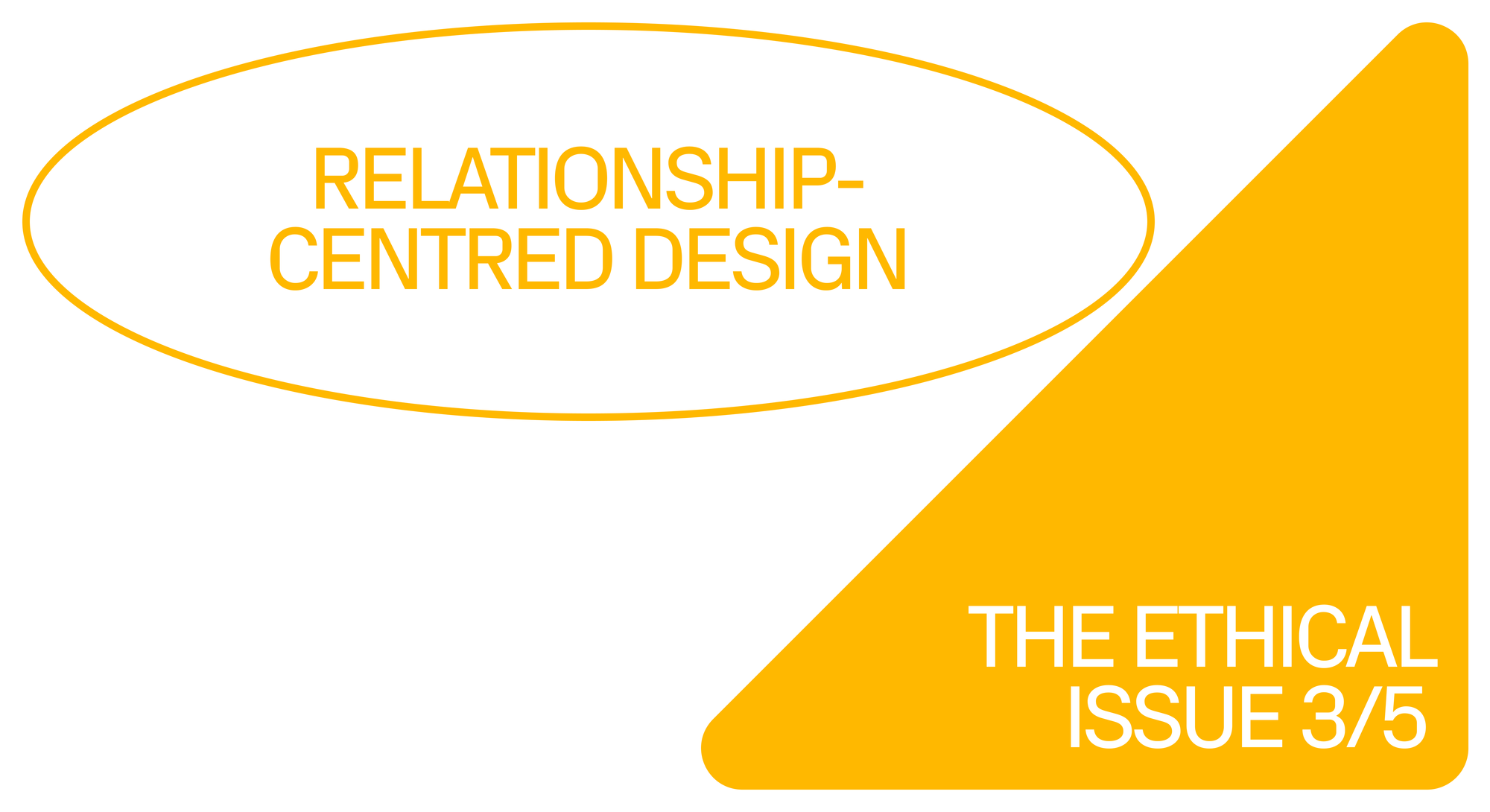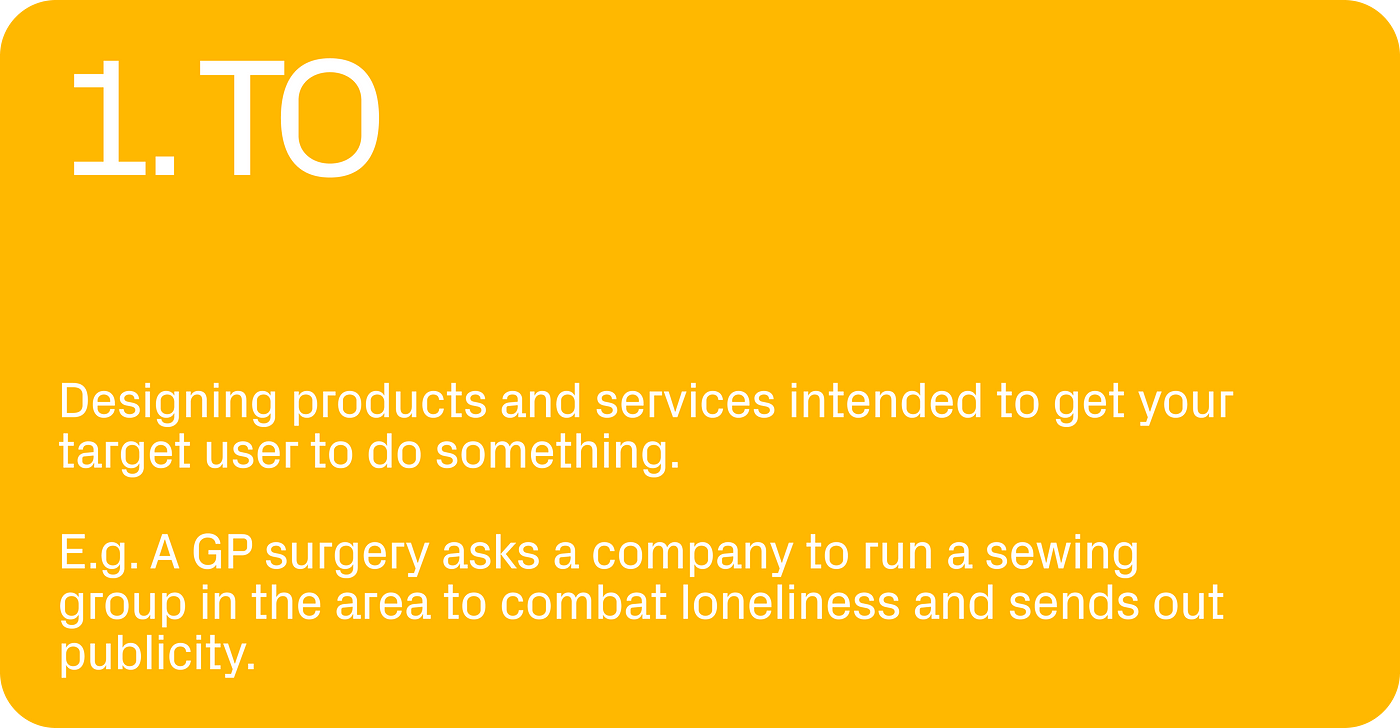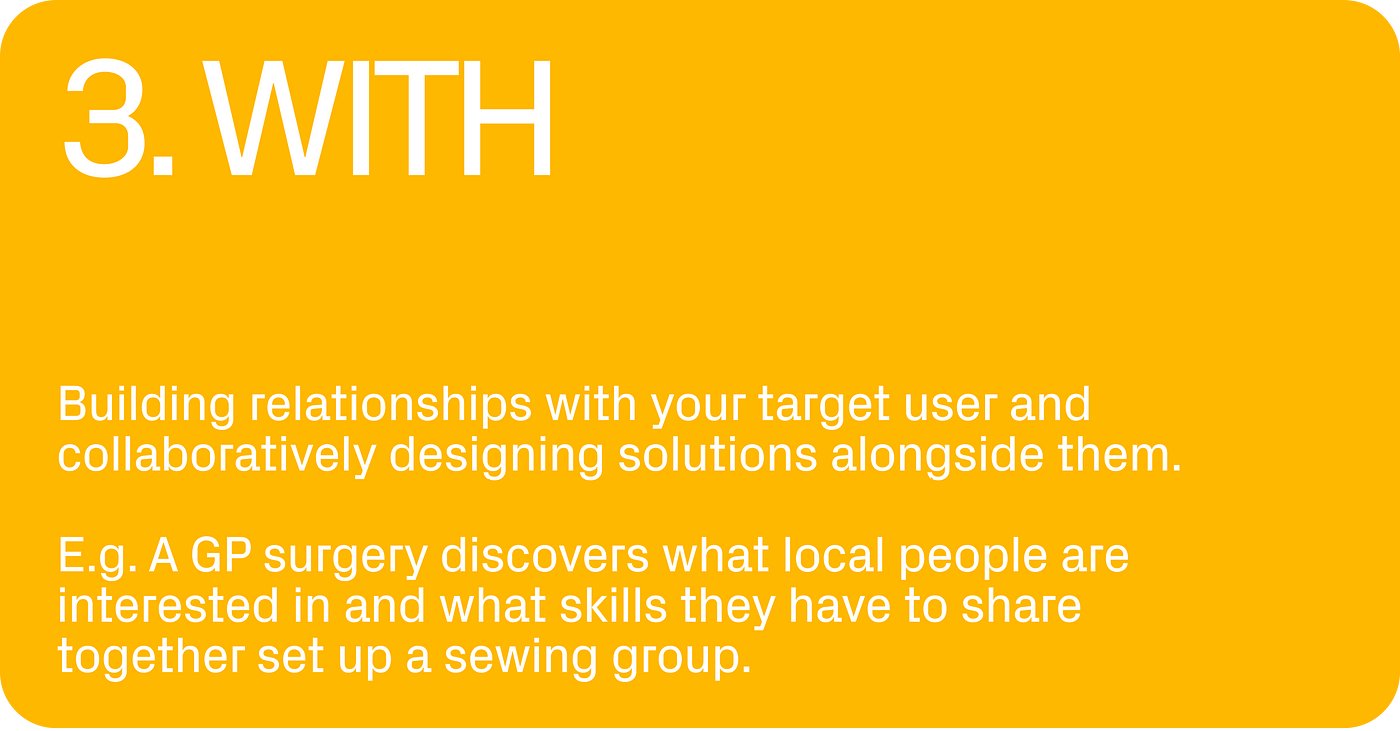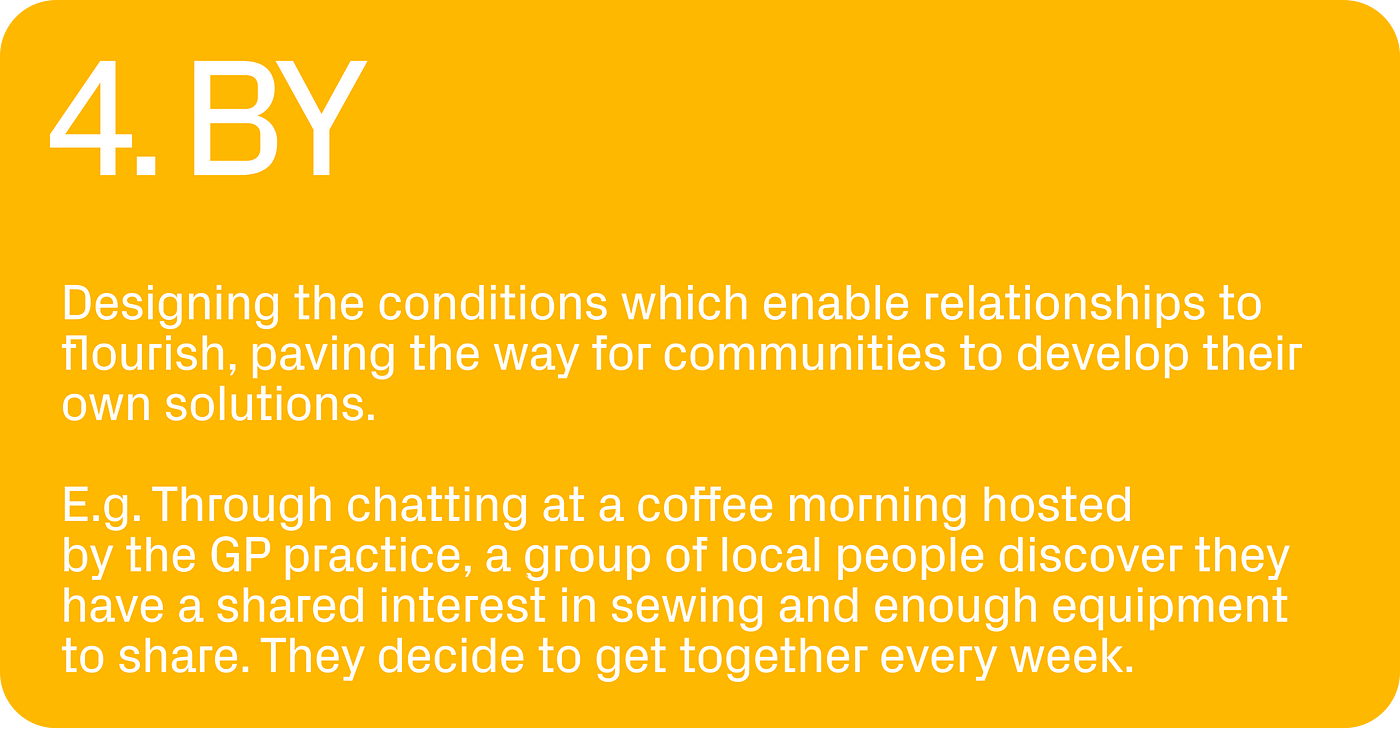Design ethics and relationship-centred practice
As designers, we are not set apart from systems of inequality, acting from the outside in. We shape and mold; we create cause and effect. Immy Robinson, an Innovation Lead at British charity Shift Design, speaks on what can be done to generate and multiply power through community relationships.

As designers, we are not set apart from systems of inequality, acting from the outside in. We shape and mold; we create cause and effect. Immy Robinson, an Innovation Lead at British charity Shift Design, speaks on what can be done to generate and multiply power through community relationships. From this article, you will learn how to design with communities and not just ‘for’ them.
2020 was a year of many reckonings. A global pandemic amplified and exacerbated the many forms of inequality we see in our communities — racial, economic, health and cultural. We saw, with renewed clarity, the crucial role everyday relationships play in shaping our wellbeing. Designers of all persuasions have worked to adapt their craft, responding to the changing world around them.
Now, as we allow ourselves to imagine a world post-Covid, we must remember what didn’t work before: the unfairness, the waste, the version of society that fell short. We must embrace this window of opportunity and strive to build a world that is more equitable, more equal, and more just.
Power beyond the pandemic
Design is not neutral and designers, by virtue of their role, have significant power. Through design, we impart a world view, a perspective, a set of experiences, a set of biases. How we approach design and the values we put at the heart of our process determines the impact we have. As designers, we are not set apart from systems of inequality, acting from the outside in. We shape and mold; we create cause and effect.
As the saying goes, with power comes responsibility, and this is where ethics comes in. Design can and must play a role in building a better future. So, as designers, we must consider carefully how we wield power, what we use it for and — crucially — how we redistribute it to tackle inequality.
Power moves through networks and is generated through relationships — between individuals, communities, organisations and institutions. Power is multiplied and shared through a web of sincere and meaningful relationships. To design in ways that seek to multiply and redistribute power, we must put relationships at the centre.
This has been the focus of my work at design agency Shift, co-leading the development of the Relationships Project. Our mission is to make it easier for organisations and services to put relationships at the heart of what they do. The community of practice we’ve fostered around the Relationships Project’s mission is forging a new field that puts ethics front and centre for design.
Introducing relationship-centred design
As designers, we can learn lessons from the world of community development, and especially from the sub-discipline of asset based community development (ABCD) — especially when it comes to designing for relationships.
Building from the belief that communities are best situated to design and lead change by ‘identifying and mobilizing existing, but often unrecognised assets’, ABCD offers a more sustainable, democratic and ethical approach to design.
Here, I’ve adapted a framework originally published by Nurture Development to explore how we can apply the ABCD approach and ethic to design, guiding us to a more relationship-centred approach. By working within this framework, we’ll discover four modes of design and examine how relationships grow and power flows through each: designing TO, FOR, WITH and BY.
These four approaches are more or less relevant depending on what you’re trying to achieve as a designer. Some things, like refuse collection, are well suited to services that are designed FOR. Others, like social care, can only be effective when designed WITH users, and are most effective and sustainable when designed BY communities themselves.

When we do design TO others, we do not include them in the design process. We — as designers — wield our power in order to achieve an impact or outcome that has been defined by those outside the community of users who need or will use the design.
Nurture Development describes this as the ‘Medical Model’: decisions made on behalf of and interventions done unto. In this mode, power and knowledge flow in one direction. Relationships — where they exist — are transactional, unequal and hierarchical. Power is guarded, preserved, held tight.

Examples from the world of behavioral insights / nudge theory often adapt this approach. For example, designing letters, texts and online choice architecture in a way that nudges the user towards a desired behavior. Among our projects at Shift, we’re working with a community development finance initiative to promote better borrowing with an online loan calculator.
Though relevant and effective in some settings, this mode of design isn’t the best at putting ethics front and centre.

When we design FOR we are taking into account and designing for our understanding of user experience, preference, need and priority.
Usually based on good intentions, this mode is akin to the ‘Charity Model’ of development. Relationships are formed between designer and user, but they are temporary, transactional and unequal. Power is still held and maintained by the designer. Information passes through the filter of the designer’s beliefs, biases and experiences.

Designing FOR can be effective. A common example is the food bank system we see operating across the UK and beyond, where donated food is provided to communities in need. Clearly user needs are the fundamental driver of this format. However, users don’t usually have agency in the design process, or indeed much choice when it comes to accessing the service — such as what types of food are available. While primary needs may be met, this model can have unintended consequences (like provision that is not culturally relevant) and discourage other community-based alternatives. Despite some positive impact, designing FOR in this way doesn’t disrupt existing hierarchies, nor does it serve to multiply or share power.

When we design WITH, we act collaboratively, designing side by side with the intended users. Designing WITH can be understood as a ‘Social Model’ of development, using approaches like co-design that are so familiar to many designers.
When we design WITH our users, we start to develop a two-way relationship based on a degree of mutual exchange and reciprocity. There’s a spectrum here: from engaging users in one or two co-creation workshops, through to working with them as equals at every stage of the process. Almost inevitably, there remains a power imbalance in this relationship. The designer has the final say in how the product or service turns out and, in the charitable sector, it’s often funders who set the brief and direction. On top of this, the output can lack sustainability, being reliant on external support for maintenance and support.

But there are many instances in which this approach to design is important and effective, especially when support from others outside the user community — who can bring specific skill sets, assets and connections — is valuable and necessary.
An example from my team at Shift is the work we’ve done to support UK housing associations to improve services for local residents, often at risk of or experiencing financial vulnerability. By holding space for user communities to share experiences and needs, and by encouraging empathy among those designing services, we’ve helped improve engagement and deepen ties. Another example we love in this mode is Heart n Soul at The Hub, an experimental research project at Wellcome Collection, led by people with and without learning disabilities and autistic people. The result is a website specifically designed to be accessible for users with a range of needs — like their ‘take a break’ option, which provides a respite from digital spaces that might be overwhelming or challenging for people with learning disabilities and autism.
When designing WITH our users, we should seek to design in ways that create new connections and share skills, knowledge and power. In doing so, we help nurture the conditions for the fourth and final design mode we’ll explore — design BY communities themselves.

When design is BY communities (i.e., the users or groups who stand to benefit from change or innovation) the process, end-to-end, is led from within. This is where the values of ABCD are fundamental. Skills, assets, knowledge and connections that already exist within the community are leveraged, shared and strengthened. Decisions about the shape, function and trade-offs of the output are made by those that use it. The chances of sustainability are enhanced because the necessary skills, resources and energy already exist within the community in which it is used.
The Mutual Aid response to Covid-19 is a recent example of design BY communities. Leveraging existing relationships, resources, energy and assets, we’ve seen communities band together over the past year to deliver support, develop new initiatives and achieve more than many thought possible. This activity was not dependent on external structures, processes or support. Instead, it was driven from within communities, allowing it to develop swiftly, adapt to emerging needs, and strengthen communities in the process. If you want to find out more about the community response to Covid, take a look at our Active Neighbours Field Guide.

As designers who do work outside of many of the communities we seek to serve, we can still play a role by shifting our focus from designing outputs to designing for relationships. A key question to ask ourselves is: How can we leverage our methods, skills and expertise to accelerate design BY communities?
We’ve been focusing on this question at the Relationships Project, and have developed some tools for communities to use when designing for change.
Intentions and practice
Designers can put ethics front and centre in their practice by intentionally acting in ways that share power, knowledge and skills. Nurturing relationships can help expand design BY communities, where knowledge, power, ideas and resources flow.
These three questions sit at the heart of ABCD, so ask yourself before starting a new project:
—What is it that communities can best do? (Design BY)
—What do communities need help with? (Design WITH)
—What do communities need outside agencies to do for them? (Design FOR)
Doing so will help you avoid defaulting to designing TO or FOR. It’s always better to start by understanding what assets already exist, and what communities can do for themselves.
As we slowly unfurl from the pandemic, we face a fork in the road: to return to ‘normal’ or build a new, kinder, more equitable normal. Design can, and must, play a central role in driving this change.